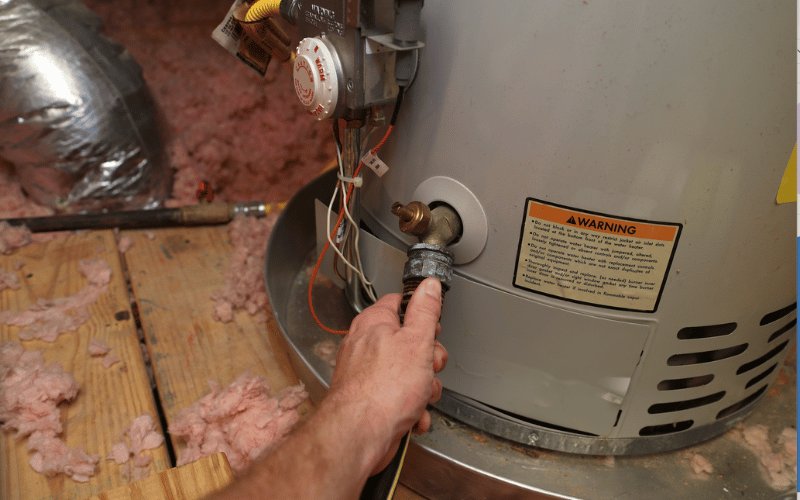The article author is making a number of great pointers on Water Heater Maintenance Tips You Can't Afford to Forget in general in the article on the next paragraphs.

Warm water is vital for daily comfort, whether it's for a refreshing shower or cleaning dishes. To guarantee your warm water system runs efficiently and lasts much longer, regular upkeep is crucial. This short article provides functional suggestions and understandings on exactly how to keep your home's warm water system to avoid disturbances and costly fixings.
Introduction
Maintaining your home's warm water system might appear challenging, yet with a few basic actions, you can ensure it runs efficiently for many years ahead. This overview covers whatever from comprehending your warm water system to DIY maintenance ideas and recognizing when to hire expert aid.
Relevance of Maintaining Your Warm Water System
Normal maintenance not only prolongs the life-span of your hot water system but likewise guarantees it runs successfully. Neglecting maintenance can cause lowered performance, higher energy expenses, and also early failure of the system.
Signs Your Hot Water System Requirements Upkeep
Recognizing when your hot water system needs interest can stop major problems. Keep an eye out for signs such as irregular water temperature level, unusual sounds from the heating system, or rusty water.
Comprehending Your Warm Water System
Before diving into upkeep jobs, it's useful to comprehend the standard components of your hot water system. Normally, this consists of the water heater itself, pipelines, anode poles, and temperature controls.
Monthly Upkeep Tasks
Normal month-to-month checks can help catch small concerns prior to they escalate.
Flushing the Water Heater
Purging your hot water heater gets rid of debris accumulation, enhancing effectiveness and extending its life.
Monitoring and Changing Anode Rods
Anode poles stop rust inside the storage tank. Examining and replacing them when broken is crucial.
Evaluating and Readjusting Temperature Level Setups
Changing the temperature settings ensures optimal efficiency and safety and security.
Do It Yourself Tips for Upkeep
You can carry out a number of maintenance tasks on your own to keep your hot water system in leading problem.
Checking for Leakages
Consistently evaluate pipelines and connections for leaks, as these can lead to water damages and greater expenses.
Testing Stress Alleviation Valves
Checking the pressure safety valve guarantees it works correctly and prevents too much stress buildup.
Insulating Pipelines
Insulating warm water pipes reduces warmth loss and can save energy.
When to Call a Specialist
While do it yourself maintenance is beneficial, some problems require specialist competence.
Complex Concerns Needing Professional Aid
Examples consist of significant leaks, electric issues, or if your water heater is constantly underperforming.
Routine Specialist Maintenance Advantages
Professional upkeep can consist of extensive inspections, tune-ups, and making certain conformity with security standards.
Verdict
Routine maintenance of your home's warm water system is necessary for effectiveness, longevity, and price financial savings. By following these pointers and understanding when to seek specialist assistance, you can guarantee a reliable supply of hot water without unexpected disturbances.
How to Maintain an Instant Hot Water Heater
Before tinkering with your hot water heater, make sure that it’s not powered on. You also have to turn off the main circuit breaker and shut off the main gas line to prevent accidents. Also turn off the water valves connected to your unit to prevent water from flowing into and out of the appliance. 2. When you’re done, you have to detach the purge valves’ caps. These look like the letter “T†and are situated on either side of the water valves. Doing so will release any pressure that has accumulated inside the valves while at the same time avoid hot water from shooting out and burning your skin. 3. When the purge valves’ caps are removed, you have to connect your hosing lines to the valves. Your unit should have come with three hoses but if it didn’t, you can purchase these things from any hardware or home repair shops. You can also get them from retail stores that sell water heating systems. Read the user’s manual and follow it to complete this task properly. When the hosing lines are connected, open the purge port’s valves. 4. You should never use harsh chemical cleaners or solutions when cleaning your unit. Make use of white vinegar instead. It should be undiluted and you’ll probably use about 2 gallons. 5. Now flush your water heater. This task should probably take about 40 minutes. We can’t give you specific directions for this because the procedure is carried out depending on the type, model and brand of your heater. With that being said, refer to the user’s manual. 6. When you’re done draining the unit, you have to turn off the purge port valves again. Remove the hosing lines that you earlier installed on each of the water valves. Put the valve caps (purge port) back in their respective places and be very careful so as not to damage the rubber discs that are found inside these caps. 7. Now that everything’s back in place, check your user’s manual again to find out how to reactivate your water heating system. 8. Once it is working, turn one of your hot water faucets on just to let air pass through the heater’s water supply pipes. Leave the tap on until water flows smoothly out of it. https://www.orrplumbing.com/blog/2014/september/how-to-maintain-an-instant-hot-water-heater/

We had been made aware of that report about How to Maintain a Hot Water Heater in a Few Simple Steps from someone on a different blog. Loved our write-up? Please quickly share it. Let another person discover it. Kudos for your time. Don't hesitate to come by our website back soon.
Source This Article
 Mara Wilson Then & Now!
Mara Wilson Then & Now! Dylan and Cole Sprouse Then & Now!
Dylan and Cole Sprouse Then & Now! Erika Eleniak Then & Now!
Erika Eleniak Then & Now! Nicki Minaj Then & Now!
Nicki Minaj Then & Now! Terry Farrell Then & Now!
Terry Farrell Then & Now!